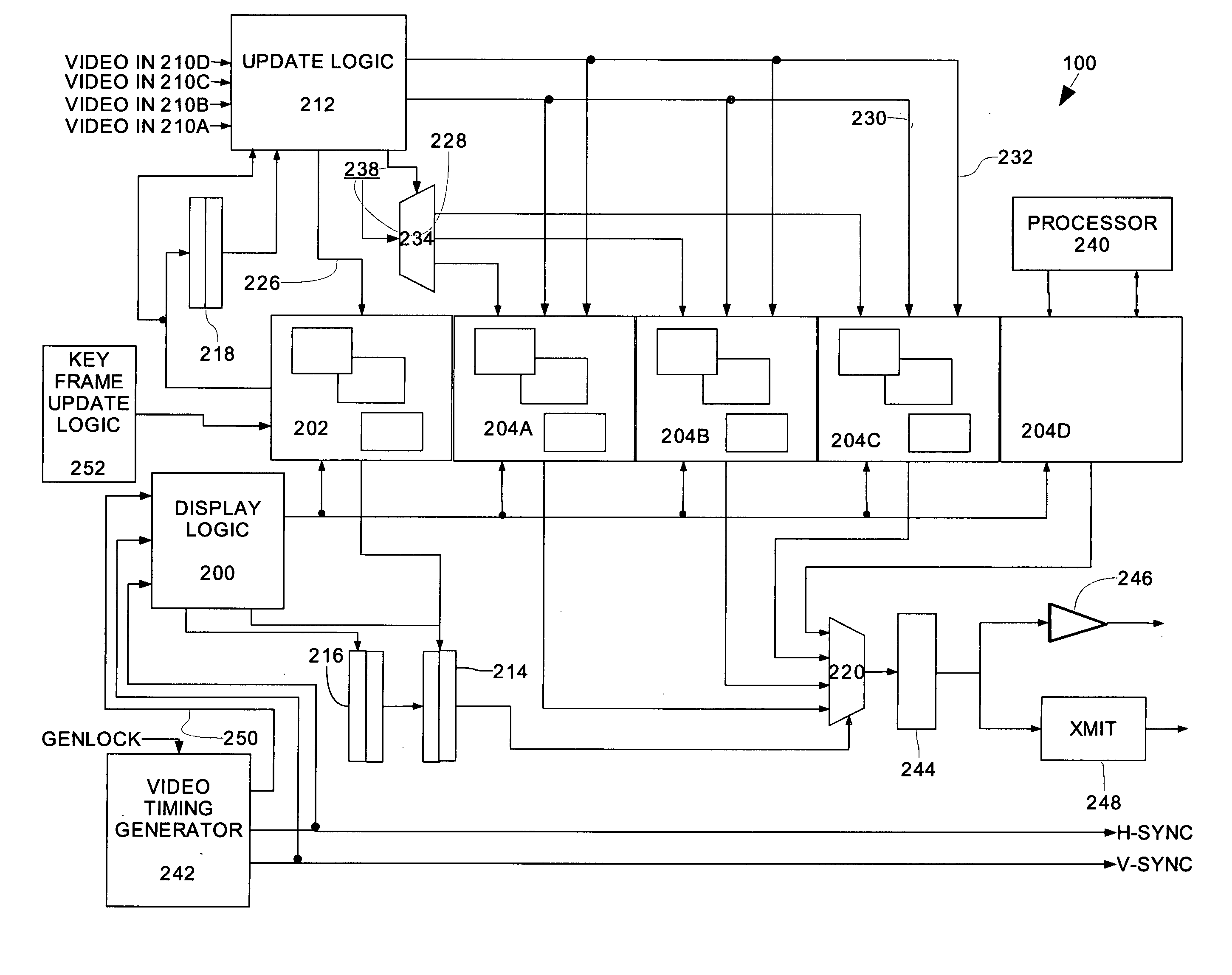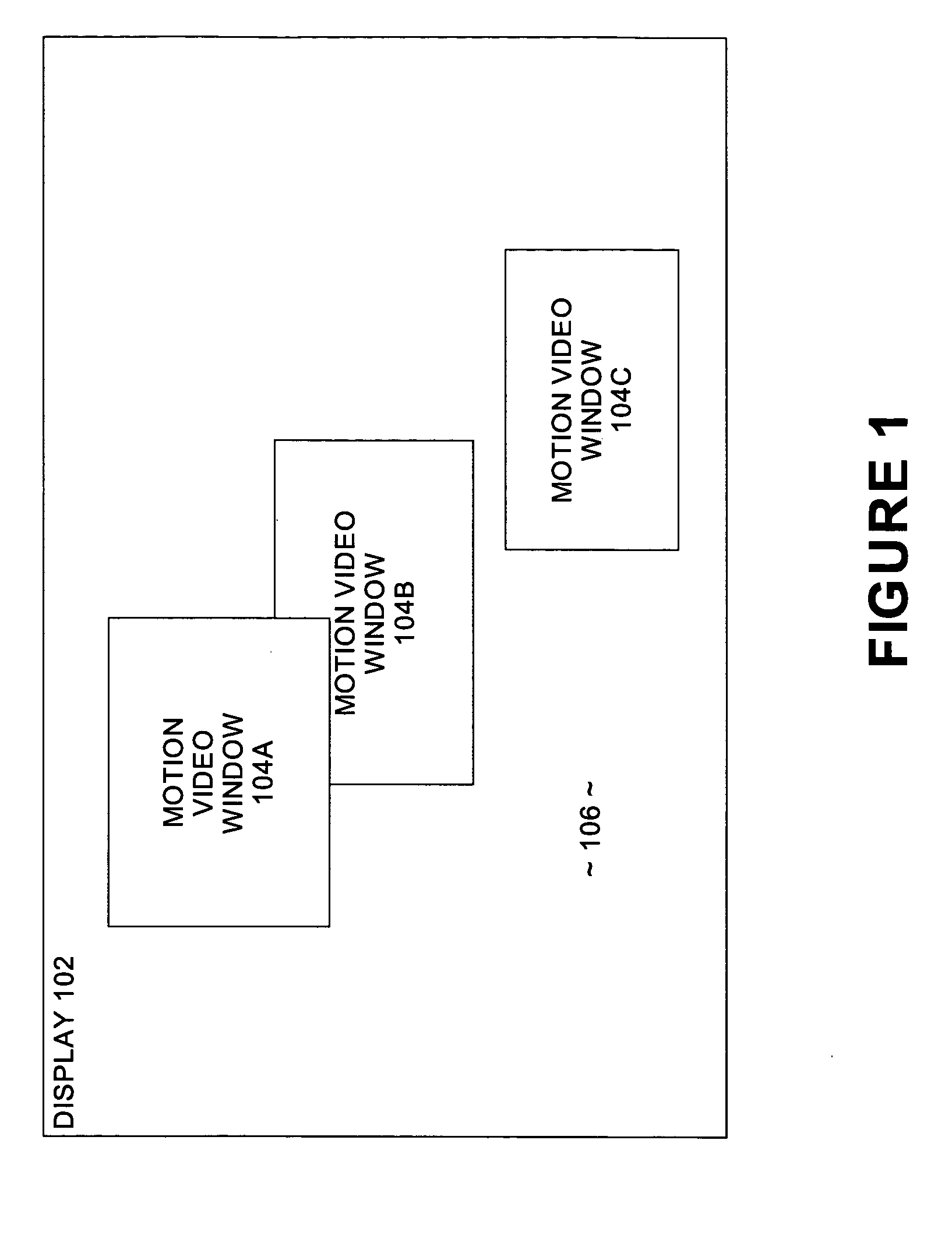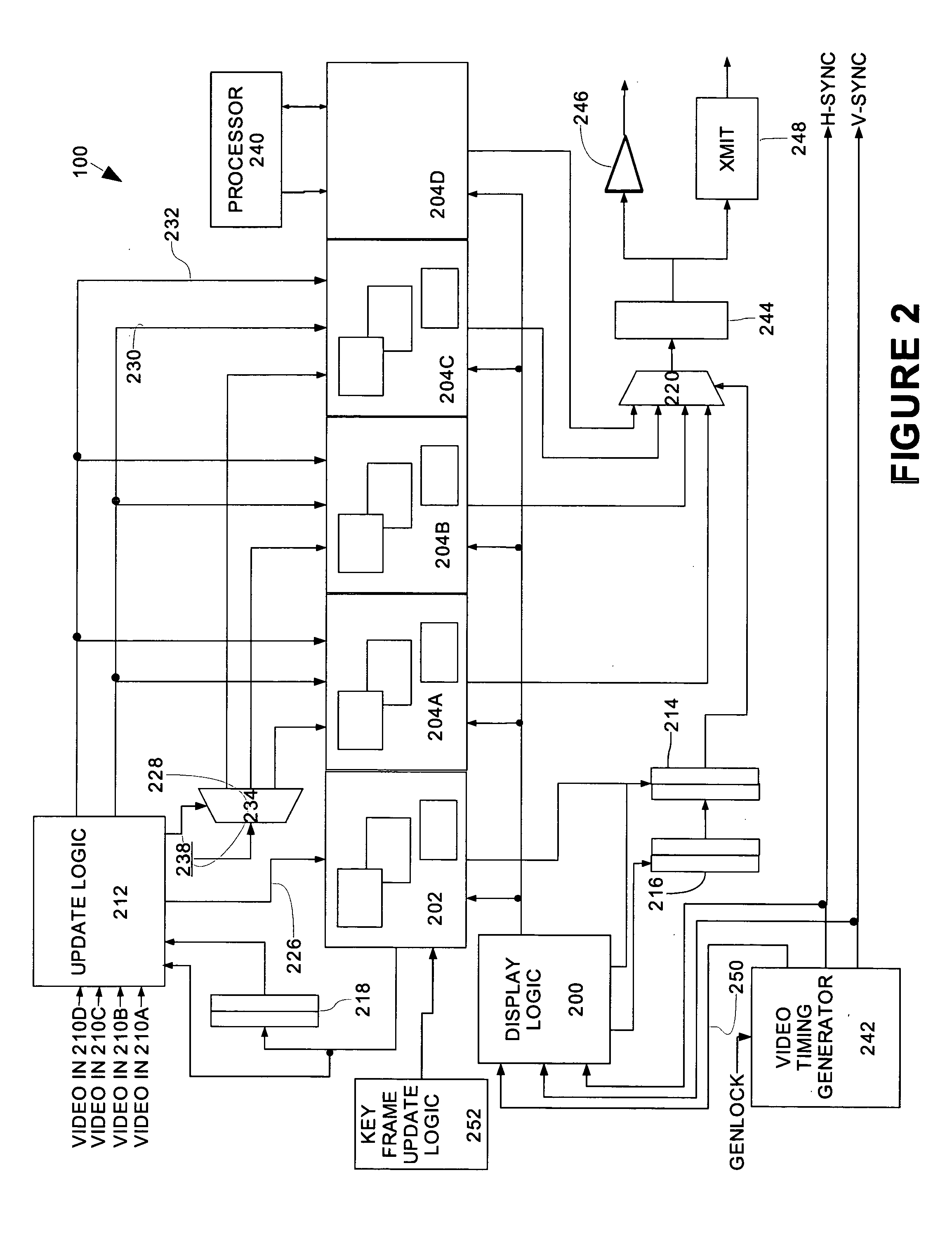Compositing multiple full-motion video streams for display on a video monitor
a video monitor and full-motion technology, applied in the field of video display systems, can solve problems such as undesirable artifacts, frame tearing, and frame tearing
- Summary
- Abstract
- Description
- Claims
- Application Information
AI Technical Summary
Benefits of technology
Problems solved by technology
Method used
Image
Examples
Embodiment Construction
[0028] In accordance with the present invention, a number of video sources are routed to various ones of a number of frame buffers 204A-C (FIG. 2) of compositing system 100 and output frames are composed from selected portions of the frame buffers. Accordingly, frame tearing in a significant number of video sources can be avoided using only a relatively small number of frame buffers. Specifically, a key frame 202 identifies which areas of frame buffers 204A-D correspond to which of a number of image sources for various portions of a display 102 (FIG. 1). Such image sources can be any of a number of incoming asynchronous motion video signals 210A-D (FIG. 2), and a background 106 (FIG. 1). Read-frame pointers 214 identify which of frame buffers 204A-D is selected for each pixel location in presenting display 102 on a monitor, and write-frame pointers 218 identify to which of frame buffers 204A-C each frame of each motion video signal is written. By coordinating to which frame buffer e...
PUM
 Login to View More
Login to View More Abstract
Description
Claims
Application Information
 Login to View More
Login to View More - R&D
- Intellectual Property
- Life Sciences
- Materials
- Tech Scout
- Unparalleled Data Quality
- Higher Quality Content
- 60% Fewer Hallucinations
Browse by: Latest US Patents, China's latest patents, Technical Efficacy Thesaurus, Application Domain, Technology Topic, Popular Technical Reports.
© 2025 PatSnap. All rights reserved.Legal|Privacy policy|Modern Slavery Act Transparency Statement|Sitemap|About US| Contact US: help@patsnap.com



